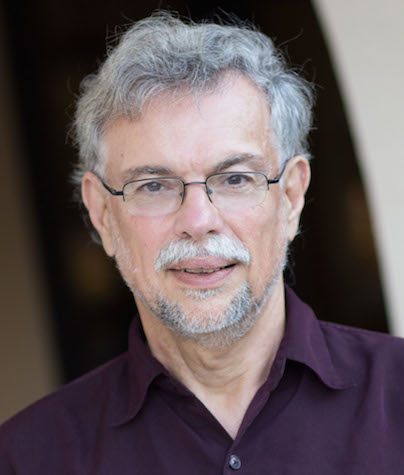Doug Lipman will be facilitating the upcoming online class, Values of the Future Through Transformative Language Arts beginning May 16th!
Doug is an incredible storyteller and facilitator and we are so excited to have him teach this class! Watch one of his terrific performances here:
About the class:
Our current economic, political, and social systems are serving fewer and fewer people, not to mention destroying the environment.
I don’t know what a future society will look like, but if it is to meet our human needs better than our current society does, I believe it needs to be formed with certain values in mind.
Fortunately, these values can be taught, not just through stories, songs, dances, and poems about the values, but also through the very processes of telling or creating stories, singing or creating songs, and so on. In other words, our artistic processes themselves can give people experiences that open them to values that are necessary for an improved society.
In this 6-week course, I’ll briefly lay out a theory of how values can be influenced, as well as the eight values I’ve chosen as “values of a future society.” I’ll introduce the values one at a time and give examples of processes from storytelling that support each value. Then I’ll help you identify and/or create processes that can give others experiences of each value, from your particular type of transformational language work.
Key to this course is inspiring each other to notice the transformative power of the creative processes. Together, we’ll engage in building an enlarging web of activities that can help people align themselves with currents that, I believe, will help move us toward a more just, supportive, and enlightened society.
Who should take this class:
Storytellers, fiction writers, narrative poets, songwriters, improvisational singers, dramatists, etc. – all who use language to help people imagine or convey their experience – especially those interested in teaching their art or discipline with an eye toward promoting generative values.
The course will be most helpful to those with enough experience in their work to have already developed some processes for doing and/or teaching their art/discipline. I define transformative language arts broadly. If you think your work might belong here, it likely does!
About Doug Lipman:
In 1970, Doug Lipman was a struggling teacher of  troubled adolescents. He had given up connecting with them when one day, by accident, he found himelf telling them a story. They responded! Ever since, he has pursued the transformative power of storytelling.
troubled adolescents. He had given up connecting with them when one day, by accident, he found himelf telling them a story. They responded! Ever since, he has pursued the transformative power of storytelling.
Over the decades, Doug has coached hundreds of people on their storytelling, writing, and recordings. He is the author of three books on storytelling (Improving Your Storytelling, The Storytelling Coach, and Storytelling Games), scores of published articles, and over 150 issues of his own email newsletters, including “eTips from the Storytelling Coach (http://StorytellingNewsletters.com).
A professional storyteller since 1976, Doug has performed and led workshops on three continents and led many online courses and webinars. His ongoing search for effective ways to teach the transformative power of storytelling has led to projects such as a new paradigm for coaching storytellers, an exploration of the seldom-noticed Hidden Storytelling Skills, and the pursuit of ways that storytelling and related arts can allow our true humanity to blossom.
 Carol Thompson moved from the Mad River Valley in Vermont to Benicia, California on Christmas Day, 2014, in order to be close to the marina where her first grandchild and his family live on a 41′ sailboat. A life-long learner, Carol has a BS in General Studies and holds certificates in Counseling & Human Relations, Non-Profit Management and will soon be certified in Introductory Transformative Language Arts. Two of her main interests are the study of Runes and the creation of beautiful miniature succulent gardens. She has taught Introduction to Runes classes in Vermont, California and New Zealand. A DNA test confirmed her Scandinavian ancestry.
Carol Thompson moved from the Mad River Valley in Vermont to Benicia, California on Christmas Day, 2014, in order to be close to the marina where her first grandchild and his family live on a 41′ sailboat. A life-long learner, Carol has a BS in General Studies and holds certificates in Counseling & Human Relations, Non-Profit Management and will soon be certified in Introductory Transformative Language Arts. Two of her main interests are the study of Runes and the creation of beautiful miniature succulent gardens. She has taught Introduction to Runes classes in Vermont, California and New Zealand. A DNA test confirmed her Scandinavian ancestry. Carol Thompson moved from the Mad River Valley in Vermont to Benicia, California on Christmas Day, 2014, in order to be close to the marina where her first grandchild and his family live on a 41′ sailboat. A life-long learner, Carol has a BS in General Studies and holds certificates in Counseling & Human Relations, Non-Profit Management and will soon be certified in Introductory Transformative Language Arts. Two of her main interests are the study of Runes and the creation of beautiful miniature succulent gardens. She has taught Introduction to Runes classes in Vermont, California and New Zealand. A DNA test confirmed her Scandinavian ancestry.
Carol Thompson moved from the Mad River Valley in Vermont to Benicia, California on Christmas Day, 2014, in order to be close to the marina where her first grandchild and his family live on a 41′ sailboat. A life-long learner, Carol has a BS in General Studies and holds certificates in Counseling & Human Relations, Non-Profit Management and will soon be certified in Introductory Transformative Language Arts. Two of her main interests are the study of Runes and the creation of beautiful miniature succulent gardens. She has taught Introduction to Runes classes in Vermont, California and New Zealand. A DNA test confirmed her Scandinavian ancestry.